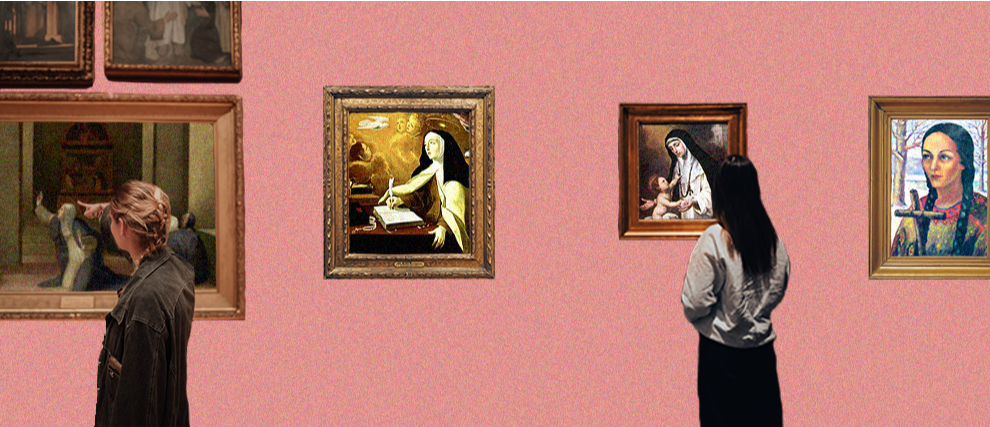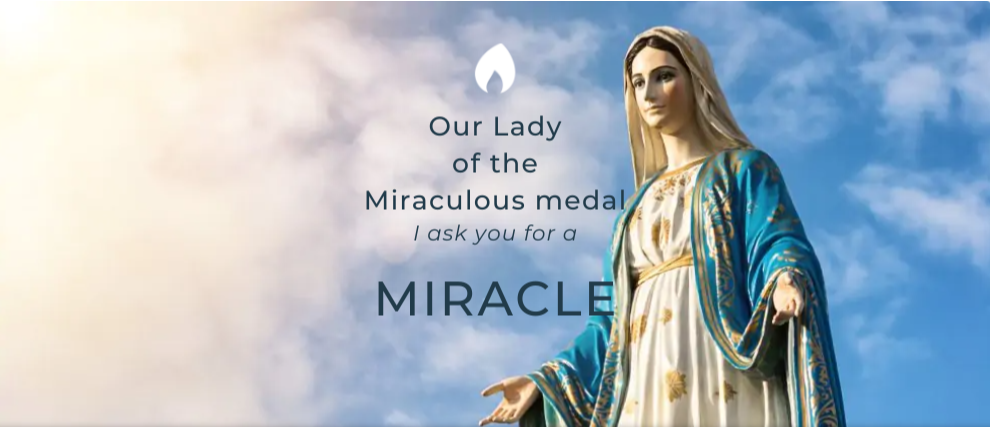The Life of the Mystic Thérèse Neumann
Thérèse Neumann, considered a Servant of God, is a mystic of the 20th century. Endowed with the gift of bilocation and prophecy, she received the stigmata of Christ during Lent of 1926 and kept them until her death. Furthermore, she relived the Passion of the Savior every Friday and was inedic for 34 years. A great fervor arose around this woman who was profoundly pious, devoted, and good to her neighbor.
Biography of Thérèse Neumann
Thérèse Neumann was born on the night of Good Friday to Holy Saturday, April 8, 1898, in Konnersreuth, in Bavaria, Germany. She was the eldest of ten children. As a little girl, she already wanted to become a religious sister, and even a missionary in Africa, but had to help her parents, who were poor, by working for a farmer.
Unfortunately, she was the victim of a serious accident in 1918. Her spinal cord was affected and her spine severely damaged. Her dream of entering religious orders then collapsed. A medical expert diagnosed her with "very severe hysteria with blindness and partial paralysis". This worsened in 1922 when she was affected by such intense digestive disorders that she could henceforth only ingest liquids. On April 29, 1923, the day of the beatification of Saint Thérèse of Lisieux, whom Thérèse prayed to fervently, the latter was miraculously healed of an irreversible lesion of the optic nerve. Two years later, on the day of the canonization of Saint Thérèse of the Child Jesus, she regained the full use of her legs. This was declared perfectly inexplicable by the doctors who were then closely monitoring her. Thérèse had explained that she heard a voice asking her if she wanted to be healed, she reportedly replied that she wanted to do the Lord's will. She was healed.
It was in 1926 that the first stigmata appeared and that she had for the first time visions of the life of Christ and of His Holy Mother Mary, but also of saints, like Saint Anthony of Padua and Saint Bernadette Soubirous.
Thérèse Neumann rendered her soul to God, following a heart attack, at 64 years old, on September 18, 1962, in Konnersreuth. More than 10,000 people gathered for her funeral. A cause for beatification was opened in 2005. For the moment, she is recognized as a Servant of God.
Thérèse Neumann's Mystical Gifts
Thérèse's Stigmata
On Friday, March 5, 1926, during Lent, Thérèse reportedly received the stigma on her side, during an ecstasy.
On the following Friday, April 2, Good Friday, Thérèse reportedly experienced the Passion of Christ during a vision and then received the stigmata on the backs of her hands and the backs of her feet.
On Good Friday of the following year, April 15, 1927, she again had a vision of the Passion of Christ and received the stigmata on the inside of her hands and feet. Later that same year, she was marked with the eight stigmata of the crown of thorns of the Son of God.
During Lent of the year 1928, Thérèse was wounded on the right shoulder by the stigma of carrying the Cross.
On Good Friday, March 29, 1929, she then received the stigmata of the flagellation.
These numerous wounds bled very regularly, without however affecting her health. They did not heal but did not become infected either. On the other hand, Thérèse Neumann suffered terribly. She had to wear special shoes in order to be able to walk.
In addition to all this, she relived the Passion of Christ every Friday and would then weep tears of blood. On Good Friday, March 30, 1956, between seven and eight thousand people gathered in front of her house to witness an ecstasy of the mystic.
She said to skeptics who told her that her stigmata were just a mental suggestion: "If you tell yourself every day that you are an ox, will horns grow on you?".
Thérèse's Inedia
Thérèse Neumann ate nothing solid and drank nothing liquid, for 36 years, with the sole exception of about 2 grams of host per day. She began her fast on August 6, 1926, after she had a vision of the transfigured Christ. She reportedly said then: "I left all hunger and thirst on Tabor", and ate nothing since then.
As many people were skeptical and did not believe in Thérèse's honesty, the bishopric of Regensburg ordered that she be observed, in 1927, for fifteen days, 24 hours a day, to scientifically prove this inedia. The study was under the direction of her attending physician, Doctor Otto Seidl and the professor of psychiatry at the University of Erlangen (a city in Germany), Ewald. Four sworn Franciscan nurses were tasked with not letting her out of their sight, at any time of day or night. At the end of the fifteen days, a report was drawn up. This report, fifty-three pages long, states that, during the two weeks, Thérèse had eaten only approximately 0.33 grams of host and drunk about 45 cm³ of water, without her weight changing. Furthermore, a blood test revealed no sign of abstinence or deficiency.
Thérèse's Visions
Thérèse had about 700 visions of the Passion of Christ, feeling in her flesh the sufferings of the Savior during His flagellation, His Way of the Cross and His crucifixion.
She also had visions concerning passages from the Old and New Testament. She reportedly provided historical, topographical, or archaeological details about places or about dead languages, spoken at the time of Jesus Christ (like Koine Greek or Aramaic), to specialists like Professor Franz Xavier Wutz, an exegete of the Old Testament at the Catholic faculty of Eichstätt and an expert in Palestinian archaeology.
Thérèse Neumann's Prophecy to Ingbert Naab
Thérèse Neumann reportedly warned the German Catholic priest, fiercely opposed to Nazism, Ingbert Naab, of the persecutions by the Gestapo and his impending arrest. She then reportedly helped him escape, predicting that he would die in the convent of Koenigshoffen, near Strasbourg.
Thérèse's Gift of Bilocation
Thérèse Neumann claimed that she had the ability to see places where she was not physically present and to witness events without having been there. She reportedly, for example, attended the proclamation of the dogma of the Assumption in Rome, or pilgrimages to Lourdes, without being there physically. This is what is called the gift of bilocation. Abbot Naber, on September 14, 1930, wrote in his journal that Thérèse Neumann would have followed, in a supernatural way, the Mass he was celebrating in Berlin. Other testimonies had also been gathered in this sense, like those of Doctor Johannes Steiner for example.
Continue your prayer with Thérèse Neumann thanks to Hozana!
Discover magnificent prayer communities thanks to Hozana!
Take part in this to enter into the secret of love of Saint Thérèse of the Child Jesus.
Meditate with .

